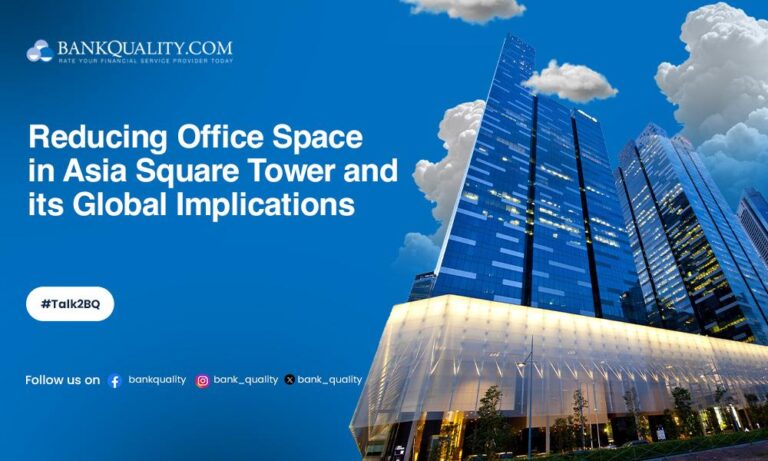Nearly half of the world’s largest corporations are preparing to reduce their office footprints, signaling a transformative shift in the future of workplace spaces, according to a recent report by CNN. This trend, fueled by the rise of remote and hybrid work models, is expected to have profound economic and social impacts—particularly for major U.S. cities that have long relied on corporate office demand to drive local economies. As companies recalibrate their real estate strategies in a post-pandemic landscape, urban centers face mounting challenges in sustaining their commercial real estate markets and associated industries.
Half of Leading Global Corporations Set to Reduce Office Footprints
In a significant shift reshaping urban landscapes and commercial real estate markets worldwide, nearly 50% of major international companies have announced plans to downsize their physical office spaces. This trend is largely driven by the widespread adoption of hybrid work models, cost-cutting strategies, and technological advancements enabling remote collaboration. Analysts warn that this move will disproportionately impact several major U.S. cities, where corporate office real estate serves as a cornerstone of economic activity and urban development.
Key implications of these reductions include:
- Declining demand for downtown office properties
- Strain on local businesses reliant on office worker patronage
- Potential shifts in public transportation funding and usage patterns
- Real estate market volatility, especially in cities like New York, San Francisco, and Chicago
| City | Expected Office Space Reduction | Economic Impact |
|---|---|---|
| New York | 20% | High |
| San Francisco | 25% | Severe |
| Chicago | 18% | Moderate |
| London | 10% | Low |
Economic Impact Expected to Hit US Cities Hardest
As leading global companies downsize their physical footprints, the ripple effects are poised to strain the economic fabric of US metropolitan areas. With a significant share of Fortune 500 firms adopting hybrid and remote work policies, demand for commercial real estate is plummeting in major cities like New York, San Francisco, and Chicago. This contraction threatens to reduce revenue streams for local businesses—from retail to public transit—that historically thrive on commuter activity. Experts warn that municipal budgets reliant on commercial property taxes could face mounting deficits, intensifying the financial challenges urban centers must navigate.
The consequent fallout extends beyond real estate, impacting employment within service sectors intricately linked to office ecosystems. Job roles in facilities management, cleaning services, and corporate catering are expected to diminish sharply, disproportionately affecting lower-wage workers. Key economic indicators highlight the scale of the disruption:
- Office vacancy rates anticipated to rise by 15-25% over the next 18 months
- Commercial property values projected to decline by up to 20% in core US cities
- Service sector employment potentially contracting by thousands across metropolitan hotspots
| City | Office Space Reduction (%) | Estimated Job Losses (Thousands) |
|---|---|---|
| New York | 22 | 30 |
| San Francisco | 18 | 12 |
| Chicago | 15 | 8 |
Shifts in Commercial Real Estate Market Anticipate Challenges Ahead
The commercial real estate landscape is experiencing unprecedented shifts as nearly 50% of the world’s largest corporations announce plans to reduce their office footprints. This trend is driven by the accelerating adoption of hybrid work models, rising operational costs, and a reevaluation of space needs post-pandemic. Financial hubs and tech-centric cities are bracing for a ripple effect that could reshape urban skylines and local economies.
US metropolitan areas, in particular, are projected to face the brunt of these changes, with some cities potentially losing significant leasing revenue and related business activity. Key challenges identified include:
- Increased vacancy rates: office spaces sitting empty as demand plunges
- Property value depreciation: declines in commercial real estate prices
- Economic ripple effects: reduced foot traffic hitting retail and service sectors
| City | Projected Office Space Reduction | Potential Economic Impact |
|---|---|---|
| New York | 35% | High |
| San Francisco | 42% | Very High |
| Chicago | 28% | Medium |
Strategies for Urban Centers to Adapt and Revitalize Workforce Hubs
As the shift toward remote and hybrid work models accelerates, urban centers must reimagine their workforce hubs to maintain economic vitality and attract new investments. One approach involves repurposing existing commercial real estate into mixed-use developments that blend residential, retail, and co-working spaces. Cities are also prioritizing enhanced public transit and digital infrastructure to support flexible commuting and decentralized work patterns. Collaborative partnerships between local governments, real estate developers, and tech companies are proving essential in fostering innovation districts that appeal to startups and freelancers.
To combat the anticipated economic impact, especially in major US metropolitan areas, urban planners are focusing on strategies that stimulate local job creation outside traditional office environments. These include:
- Incentives for tech incubators and creative industries to lease affordable space within former office towers.
- Community-driven initiatives that revive retail corridors through pop-up shops and cultural events.
- Investment in skills development programs tailored to emerging sectors targeting diverse workforce demographics.
| Strategy | Impact |
|---|---|
| Repurposing Commercial Space | Boosts mixed-use appeal & residential growth |
| Enhanced Public Transit | Facilitates flexible commuting options |
| Innovation Districts | Promotes startup ecosystems and local jobs |
| Skills Development | Prepares workforce for modern industries |
The Conclusion
As more global corporations shift toward reduced physical office footprints, the repercussions for urban centers—particularly in the United States—are becoming increasingly apparent. With half of the largest companies planning to downsize or eliminate office spaces, city economies that have long depended on corporate tenancy face significant challenges ahead. How municipalities and stakeholders adapt to this evolving landscape will be critical in shaping the future of urban work environments and local economies.




